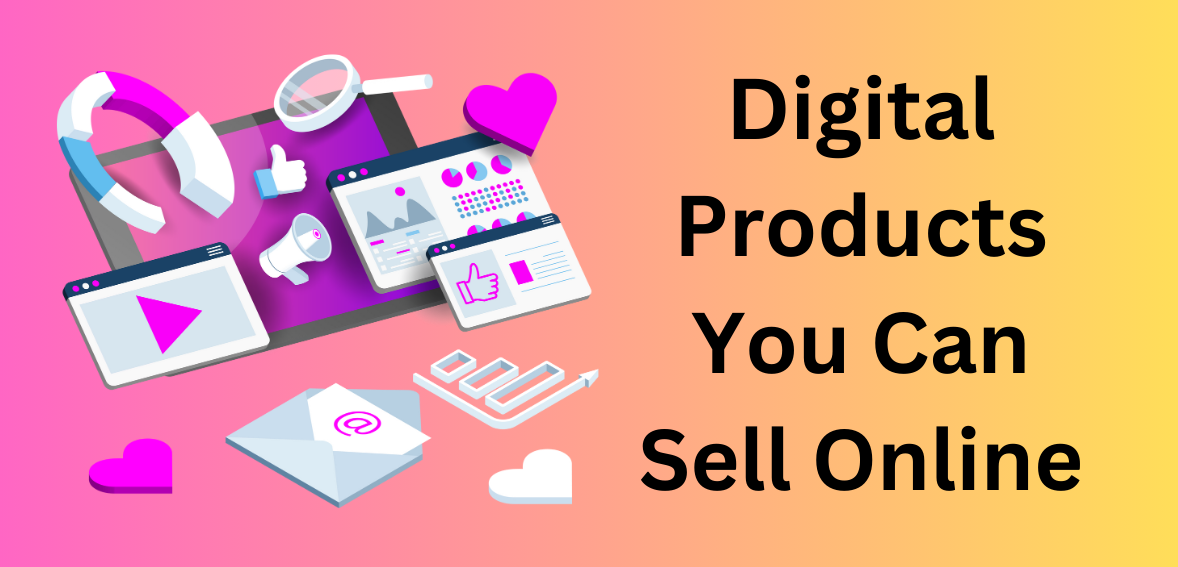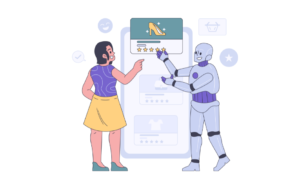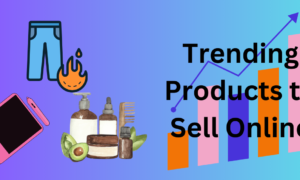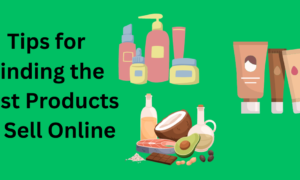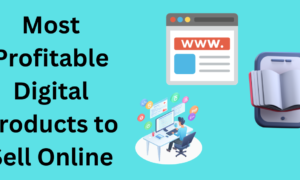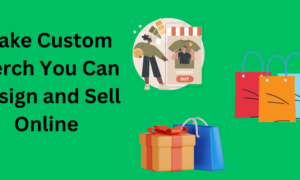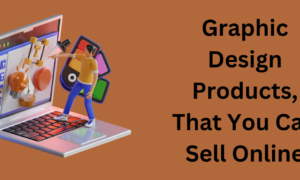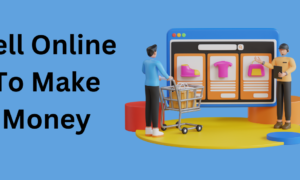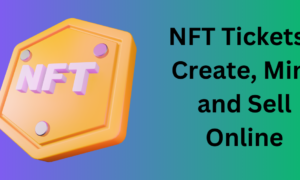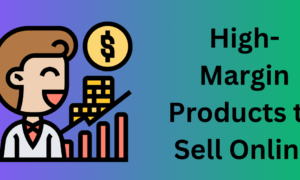Introduction to Digital Products
Are you looking for a new way to monetize your skills and knowledge? Selling digital products online might just be the perfect solution for you! In today’s digital age, the demand for virtual goods has skyrocketed, opening up endless opportunities for entrepreneurs like yourself. Whether you’re an artist, writer, musician, or expert in any field, numerous types of digital products can be created and sold online. But why should you consider selling digital products? And how can you create and market them effectively? In this blog post, we’ll explore all these questions and more as we delve into the world of selling digital products online. So grab your creative hat and let’s get started!
Benefits of Selling Digital Products
Selling digital products online can be a lucrative venture with numerous benefits. One of the main advantages is that digital products have low production costs and high profit margins. Unlike physical products, there are no manufacturing or shipping expenses involved. Once you create your digital product, it can be replicated and sold repeatedly without any additional costs.
Another benefit is the potential for passive income. Digital products can be set up to sell automatically, allowing you to generate income even while you’re not actively working on promoting or selling them. This means that once your product is created and marketed effectively, it has the potential to bring in revenue consistently over time.
Additionally, selling digital products allows for scalability. You can reach a global audience without limitations imposed by physical location or inventory constraints. With the power of the internet, you have access to a vast customer base from all around the world.
Furthermore, selling digital products provides flexibility and convenience for both sellers and buyers. Customers can easily access their purchases instantly after completing a transaction, eliminating waiting times associated with shipping physical goods. As a seller, you have the freedom to work from anywhere at any time since everything is done digitally.
Creating and selling digital products allows for creativity and self-expression. Whether it’s an e-book sharing your knowledge in a specific field or an online course teaching valuable skills, you have the opportunity to share your expertise with others while also generating income.
In conclusion,
selling digital products offers several advantages such as low production costs,
potential for passive income,
scalability,
flexibility
and opportunities for creativity.
These benefits make it an appealing option for entrepreneurs looking to generate revenue online
Types of Digital Products to Sell
When it comes to selling digital products online, the possibilities are endless. Whether you’re a writer, artist, photographer, or expert in a particular field, there’s a digital product waiting to be created and sold. Here are 15 types of digital products that you can consider adding to your online store.
1. Ebooks: Share your knowledge and expertise by writing and selling ebooks on various topics.
2. Online courses: Create comprehensive courses that provide valuable information and skills to your audience.
3. Stock photos: If you have a talent for photography, sell high-quality stock photos that can be used by businesses or individuals.
4. Graphic templates: Design eye-catching templates for social media posts, presentations, or websites.
5. Music tracks: Compose and sell original music tracks for use in videos or as background music.
6. Webinars: Offer live webinars where you share insights and strategies with your audience.
7. Software plugins/extensions: Develop plugins or extensions that enhance the functionality of popular software platforms.
8. Mobile apps: Create useful mobile applications that solve specific problems or cater to niche markets.
9. Art prints: Sell downloadable art prints that customers can print at home or take to a professional printer.
10. Podcasts: Produce engaging podcasts on interesting topics and offer premium episodes for sale.
11 . Video tutorials : Create step-by-step video tutorials covering various subjects such as cooking recipes, DIY projects, makeup tips, etc.
12 . Printable planners: Design printable planners with different themes like daily, weekly, and monthly schedules, meal planning pages, etc.
13 . Website themes/templates: Craft visually appealing website themes/templates compatible with popular content management systems.
14 . Lightroom presets: Develop presets for photo editing software like Adobe Lightroom which allows users to transform their images easily.
15 . Virtual reality experiences: Dive into the world of virtual reality by creating immersive experiences like games, tours, or simulations.
These are just a few examples of the types of digital products
How to Create and Market Your Digital Product
Creating and marketing your own digital product can be an exciting venture. It allows you to showcase your expertise, share your knowledge, and potentially generate passive income. But where do you start? Here are some key steps to guide you in creating and effectively marketing your digital product.
Identify a niche or topic that aligns with your skills and interests. This will make it easier for you to create valuable content that resonates with your target audience. Conduct thorough research to understand the needs and pain points of your potential customers.
Once you have identified your niche, brainstorm ideas for your digital product. It could be an e-book, online course, audio program, or even a software tool. Consider what format would best deliver value to your audience.
Next, develop a detailed outline or plan for your digital product. Break it down into modules or chapters if applicable. Make sure the content is well-structured and flows logically.
Create high-quality content that provides actionable insights and solves specific problems for your audience. Use engaging visuals like images or videos to enhance the learning experience.
When it comes to marketing, utilize various channels such as social media platforms (Facebook ads), email newsletters, guest blogging on relevant websites (with backlinks), and hosting webinars or live events (to build credibility).
Build an attractive sales page with compelling copywriting that highlights the benefits of purchasing your digital product. Include testimonials from satisfied customers if available.
Consider offering special promotions or discounts during launch periods to incentivize potential buyers.
Last but importantly: gather feedback from customers who have purchased and used the product – this will help improve future iterations!
Remember: Creating a successful digital product takes time so stay persistent!
Platforms for Selling Digital Products Online
When it comes to selling digital products online, choosing the right platform is crucial. There are numerous platforms available, each with its own unique features and benefits. Here are a few popular options:
1. Shopify: Known for its user-friendly interface, Shopify allows you to create an online store easily. It offers various templates and customization options to suit your brand.
2. Etsy: If you specialize in handmade or vintage items, Etsy is the perfect platform for you. With a large community of buyers interested in unique products, it can help boost your sales.
3. Gumroad: This platform focuses on simplicity and ease of use for creators who want to sell digital downloads like ebooks or music files directly to their audience.
4. Teachable: Ideal for those looking to sell online courses or educational content, Teachable provides tools for course creation, marketing, and student management.
5. WooCommerce: A plugin built specifically for WordPress websites, WooCommerce allows you to turn your website into an online store quickly and easily.
Remember that no single platform fits all needs; consider factors such as pricing structures, integration capabilities with other tools (such as email marketing), customer support options before making a decision about which platform suits best your digital product business!
Successful Examples of Selling Digital Products
Successful Examples of Selling Digital Products
1. Ebooks: Many authors have found success by self-publishing their ebooks on platforms like Amazon Kindle and Smashwords. With the right marketing strategy, they can reach a wide audience and generate passive income.
2. Online courses: Platforms like Udemy and Teachable allow experts to create and sell online courses in various subjects. By sharing their knowledge, these entrepreneurs are able to earn money while helping others learn new skills.
3. Stock photos: Photographers can sell their high-quality images on sites like Shutterstock or Adobe Stock, catering to businesses and individuals in need of visually appealing content for websites, social media, or marketing materials.
4. Graphic design templates: Designers can create customizable templates for logos, business cards, flyers, and more using tools like Canva or Illustrator. These templates are valuable resources for small businesses looking for professional designs at affordable prices.
5. Web development themes/plugins: Developers who specialize in web design often create themes or plugins for popular website builders like WordPress or Shopify. These digital products enhance the functionality and appearance of websites.
6. Music downloads: Independent musicians can sell their music directly to fans through platforms such as Bandcamp or SoundCloud Pro Unlimited, cutting out the middleman while building a dedicated fan base.
7. Mobile apps: Entrepreneurs with coding skills can develop mobile apps that solve specific problems or provide entertainment value to users through app stores like Google Play Store or Apple App Store.
8. Podcast subscriptions: Content creators who produce regular podcasts may offer exclusive access to bonus episodes or ad-free listening experiences through subscription-based services such as Patreon or Stitcher Premium.
9. Video tutorials/courses: Experts in various fields can create video tutorials/courses covering topics ranging from cooking techniques to fitness routines – selling them on platforms such as YouTube Premium Vimeo OTT, generating revenue from subscriber fees.
10. Webinars/Online workshops: Professionals with expertise in specific areas can host webinars or online workshops, providing valuable insights and knowledge
Tips for Increasing Sales and Generating Passive Income
When it comes to selling digital products online, increasing sales and generating passive income are top priorities for any seller. Here are some tips to help you achieve these goals.
1. Know your target audience: Understanding who your ideal customers are will allow you to tailor your marketing efforts and product offerings specifically for them.
2. Create compelling product descriptions: Clearly communicate the value of your digital products by highlighting their benefits and unique features. Use persuasive language that resonates with your target audience.
3. Offer limited-time promotions: Creating a sense of urgency can encourage potential buyers to make a purchase sooner rather than later. Consider offering discounts or bonuses for a limited period of time.
4. Leverage social media: Utilize platforms like Instagram, Facebook, and Twitter to promote your digital products and engage with potential customers. Share testimonials, behind-the-scenes content, and sneak peeks to generate interest.
5. Collaborate with influencers: Partnering with influencers in your niche can expose your digital products to a wider audience and boost credibility. Look for influencers whose values align with yours for maximum impact.
6. Optimize your website for conversions: Make sure your website is user-friendly, visually appealing, and optimized for mobile devices. Incorporate clear call-to-action buttons throughout the site to guide visitors towards making a purchase.
7. Establish an affiliate program: Invite others to promote your digital products in exchange for a commission on each sale they refer. This can help expand your reach exponentially while generating passive income.
8. Provide exceptional customer service: Aim to exceed customer expectations by promptly addressing inquiries or issues they may have regarding their purchases.
By implementing these tips into practice, you’ll be well on your way toward increasing sales and generating passive income from selling digital products online!
Conclusion
Selling digital products online offers endless opportunities for entrepreneurs and creators alike. With the right strategies, you can turn your knowledge, skills, or creativity into a profitable venture.
In this article, we explored various types of digital products that you can sell online. From ebooks to online courses, and software to stock photos, there is something for everyone in the digital marketplace.
We also discussed how to create and market your digital product effectively. By understanding your target audience and leveraging platforms like social media and email marketing, you can reach a wider audience and boost your sales.
Speaking of platforms, we highlighted some popular options for selling digital products online such as Etsy, Gumroad, Teachable, and Shopify. Each platform has its own unique features and benefits that cater to different types of sellers.
To inspire you further on your journey towards selling digital products successfully, we shared examples of individuals who have made it big in this industry. Their stories serve as reminders that with dedication and innovation, anyone can achieve success.
We provided valuable tips on increasing sales and generating passive income from your digital products. Remember to continuously improve your offerings based on customer feedback while exploring new marketing techniques to expand your reach even further.
Now armed with knowledge about the world of selling digital products online – go ahead! Take those first steps towards creating an incredible product that resonates with customers worldwide!
Remember: The possibilities are endless when it comes to selling digital products online – all you need is determination mixed with a dash of creativity! So why wait? Start today by brainstorming ideas for your own unique creation! Happy selling!

